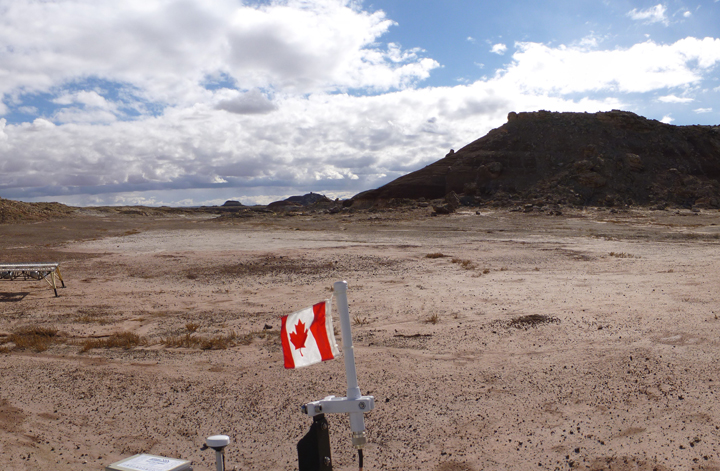Before humans set foot on Mars, it’s likely that a rover will be the first to get a sample from the red planet and bring it back to Earth.

That’s why researchers at several universities are conducting a sort of dress rehearsal for such a future mission.
READ MORE: NASA looking for astronauts to head to Mars
Over the next two weeks, 35 students will gather at “Mission Control” at Western University in London, Ont. and control a robotic mission, in partnership with the Canadian Space Agency (CSA).
The Canadian robotics company MacDonald Dettwiler and Associates (MDA) have built the six-wheeled rover that will be trundling the terrain not on Mars, but in Utah. On board is a 3-D laser scanner as well as several cameras and, of course, a drill to collect rock samples.
This is the university’s third year working a mission like this with the CSA, though the location is the most realistic to Mars than it has been in the past.
Tuesday was sol 2 (sol is one Martian day) for the mission that will last for two weeks.
Space agencies are extremely curious about Mars and unravelling its long history and answering the questions “Is there life? Was there ever life?” Though several robotic missions have been sent to the red planet since Mariner 4 first touched down in 1964, no mission has ever returned a sample to Earth. Having planetary scientists analyze a real sample is something many would like to see and would be a treasure trove of information.
But before we get there, we’ll need to train people to operate the rovers in a realistic — what scientists call analog — environment.

Get breaking National news
“One of the biggest things is, we’re good and we’ve gotten things to the surface of Mars, but we’ve never gotten anything back off,” said Gordon Osinski, assistant professor and NSERC/MDA/CSA Industrial Research Chair in Planetary Geology at the University of Western Ontario.
But he’s confident that that will soon change. And that’s what this simulation is all about.
“A really big part of this is training the next generation of Mars explorers,” Osinski said.
“When you’re doing an actual planetary mission you never know if you missed anything,” he said. “We have a team down in Utah that is kind of documenting things, taking imagery…. We can also go that one step further. There is a drill mounted on the rover and we will actually bring samples back to Western and see how well they did or didn’t.”
So far the mission has gone well, with one speed bump: the camera on the mast of the rover can’t rotate its designed 360-degree view. As with any technical glitch, there’s a workaround: you just move the rover.
And of course, there are the human challenges.
“The students are getting used to pinpricks of data: an image here, an image there,” Osinski said. “Thinking and processing data in our brains that way is definitely a challenge for the students, but they’re doing fantastic.”
The mission will run until Nov. 27.
“We have the most realistic rover, the biggest science team in a very Mars-like terrain,” Osinzki said. “It’s a very exciting thing.”


Comments